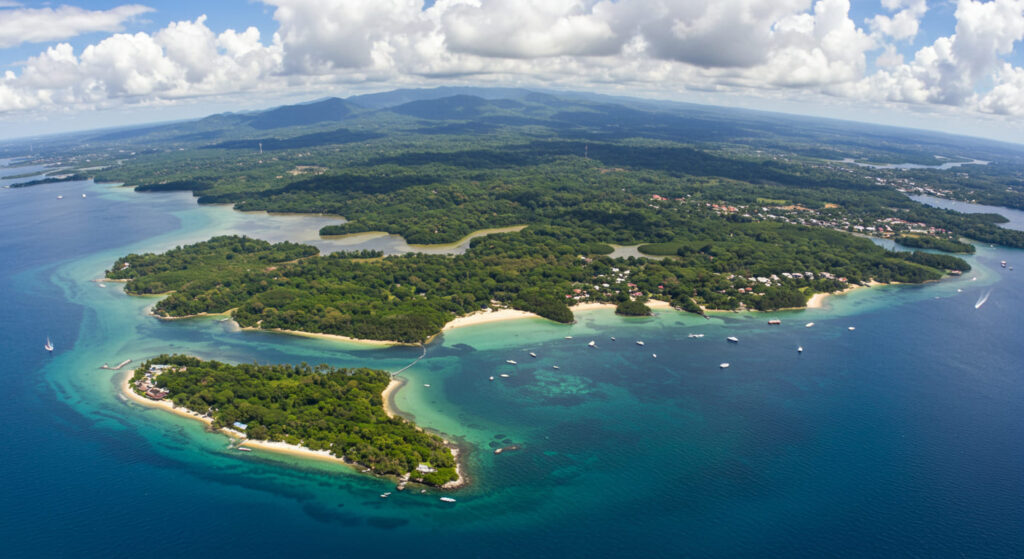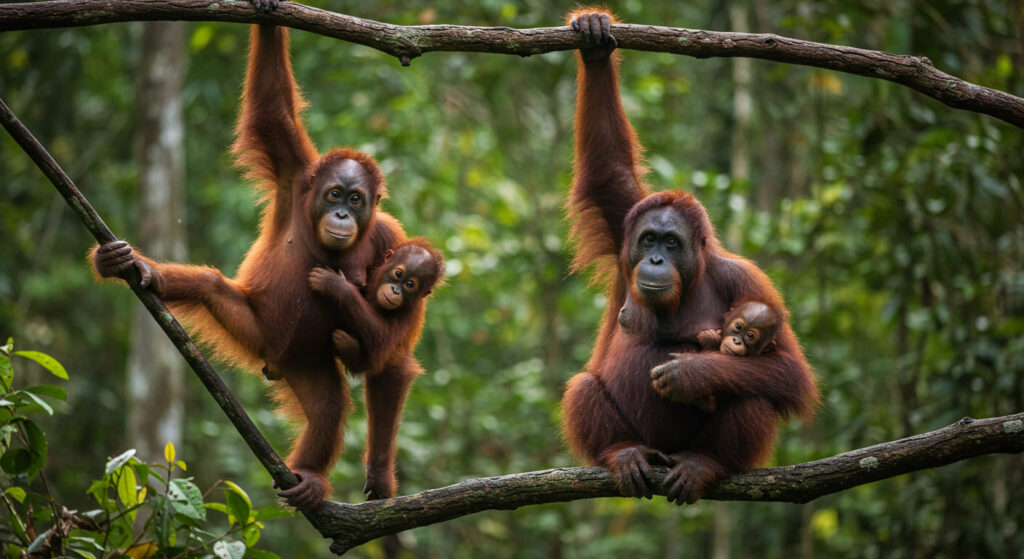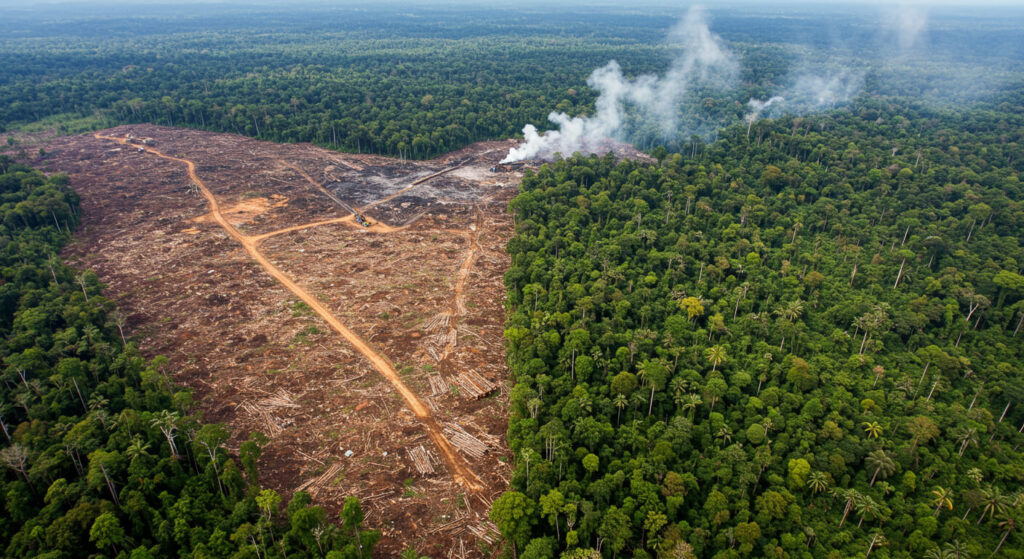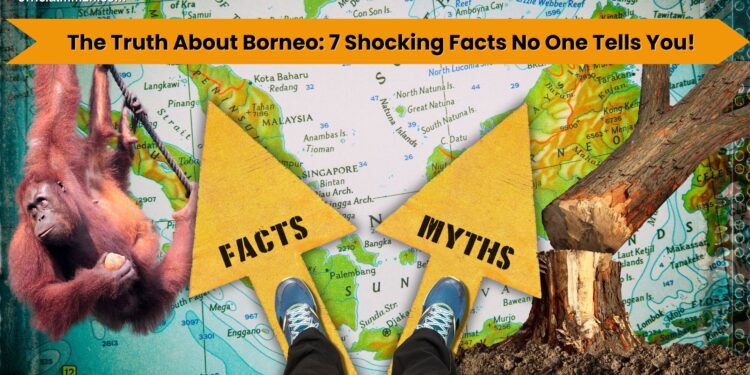The Truth About Borneo: 7 Shocking Facts No One Tells You
Borneo is one of the most fascinating destinations in the world, attracting travelers with its breathtaking rainforest, diverse wildlife, and rich cultural heritage. As the third largest island in the world, Borneo is shared by Malaysia, Indonesia, and Brunei, each offering unique experiences.
However, many misconceptions surround this extraordinary place. From deforestation and wildlife conservation to hidden travel costs and safety concerns, this guide uncovers the facts about Borneo that every traveler should know before visiting.
1. Borneo Is Not Just Malaysia
One of the biggest misunderstandings about Borneo is that it is solely part of Malaysia. In reality, Borneo is home to three countries:
- Malaysian Borneo consists of Sabah and Sarawak, two states on the northern part of the island.
- Indonesian Borneo, known as Kalimantan, covers nearly 73% of the island.
- Brunei, a small but wealthy nation, occupies a small portion of Borneo.
Understanding these divisions is essential, as each region has different visa requirements, cultural influences, and ecosystems. When people refer to visiting Borneo, they are often speaking about Malaysian Borneo, but it’s important to distinguish between the regions.
2. Borneo Is Not a Short Hop from Mainland Malaysia
Borneo is often mistakenly thought of as being close to Peninsular Malaysia. In reality, it requires a 2.5 to 3-hour flight from Kuala Lumpur to cities like Kota Kinabalu or Kuching.

The island of Borneo is vast, covered with dense rainforest and rugged terrain, making travel between regions more challenging. Flights within Malaysian Borneo can be expensive, and overland journeys take longer than expected due to winding roads and mountainous landscapes.
For those visiting multiple destinations, planning for long travel times is essential.
3. Safety Concerns: Is Borneo Really Safe?
Borneo is considered a safe destination, especially in cities like Kota Kinabalu and Kuching. Crime rates are low, and both urban and rural populations are welcoming to tourists.
However, there are safety concerns in some parts of Borneo, particularly on the eastern coast of Sabah, near Semporna. Some governments have issued travel warnings due to past piracy incidents and kidnappings in the region. Though incidents have declined, travelers should always check up-to-date travel advice before visiting.
For the majority of visitors, Malaysian Borneo and Indonesian Borneo offer a secure and rewarding travel experience when following basic safety precautions.
4. You Are Not Guaranteed to See Orangutans in the Wild
Seeing orangutans in the wild is one of the biggest reasons people visit Borneo. However, due to habitat destruction, wild sightings are not guaranteed.

The best places to see Bornean orangutans are:
- Sepilok Orangutan Rehabilitation Centre – a conservation site in Sabah that rehabilitates orphaned and injured orangutans.
- Kinabatangan River – a rich wildlife corridor where sightings of orangutans, pygmy elephants, and proboscis monkeys are possible.
- Danum Valley Conservation Area – one of Borneo’s natural forests, home to clouded leopards, rhinos, and endemic species.
Wild orangutan populations are declining due to deforestation and palm oil plantations, making conservation work by organizations like WWF more important than ever.
5. Diving in Borneo Is Not Amazing Everywhere
Borneo is known for its world-class dive sites, but not all areas offer great diving experiences.
The most famous dive site is Sipadan, considered one of the best in the world. However, diving there requires an advanced certification, and permits are limited. Accommodations in Semporna can be costly, and planning ahead is necessary.
For beginner divers, Tunku Abdul Rahman Marine Park near Kota Kinabalu is more accessible, though visibility varies. Due to its location near the Java Sea, some areas may have plastic pollution, which affects underwater experiences.
Travelers should choose their diving locations wisely to ensure they meet their expectations.
6. Kota Kinabalu Is Underrated: There Is Plenty to Do
Many travelers overlook Kota Kinabalu, assuming it is just a transit hub. However, the city and its surroundings offer many attractions:
- The Floating Mosque – one of the most beautiful mosques in Southeast Asia.
- Gaya Street Market – a weekend market featuring local crafts and street food.
- Tunku Abdul Rahman Marine Park – offering island-hopping and snorkeling opportunities.
- Cultural Villages – showcasing the indigenous heritage of Sabah and Sarawak.
For adventure seekers, Mount Kinabalu is one of the most popular hiking destinations in the region. At 4,095 meters above sea level, it is the tallest mountain in Malaysia and part of the oldest rainforest in the world.
7. The Harsh Reality of Deforestation in Borneo
One of the most shocking aspects of visiting Borneo is witnessing the effects of deforestation firsthand.

Borneo’s rainforest is over 130 million years old, making it one of the oldest in the world, even older than the Amazon Rainforest. However, large portions have been cleared for logging and palm oil plantations, which has caused habitat loss for orangutans, elephants, and clouded leopards.
Deforestation leads to environmental issues, including:
- Soil erosion – forests are opened up by humans, making the land more susceptible to fires.
- Loss of biodiversity – species like the Bornean clouded leopard and proboscis monkey are at risk.
- Plastic pollution – seen in rivers like the Kinabatangan River.
Organizations like WWF and conservation centers such as Danum Valley Conservation Area work to protect Borneo’s rainforest and restore natural habitat.
To support responsible tourism, visitors can stay in eco-friendly lodges such as Sukau Rainforest Lodge, which focus on conservation and sustainability.
Conclusion The Truth About Borneo
Borneo is a destination unlike any other, offering stunning biodiversity, tropical rainforests, and cultural richness. However, it is essential for travelers to understand the realities of travel in the region.
From longer-than-expected travel times to deforestation concerns and wildlife conservation challenges, knowing these facts about Borneo can help visitors make informed decisions.
For those planning to visit Borneo, supporting sustainable tourism and conservation efforts can help protect Borneo’s natural forests for future generations.




